
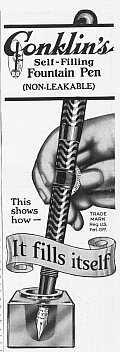

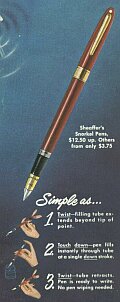





PenInHand - Musings on the Hobby
Advertisements As References
by Jim Mamoulides, October 31, 2002
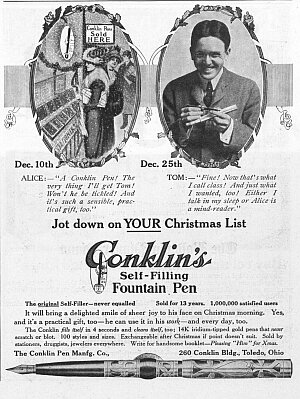
1911 Conklin
Advertisement - Isn't This Guy Just A Little Bit Too
Happy?
A Great Source Of History
One of the best sources of information on vintage pens are the print advertisements published by pen manufacturers to promote their products. In the first half of the twentieth century print advertising was king and magazines such as the weekly Saturday Evening Post were key to getting the message out on new products, models, features, and promotions. As a result, print advertisements act as a physical record that many collectors rely on for identification and dating.
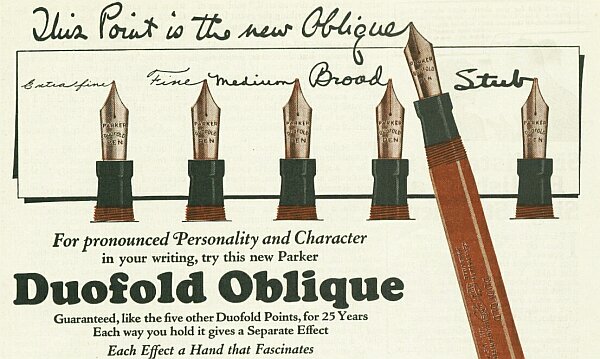
1925 Parker
Duofold Advertisement Detail Showing The Newly Introduced
Oblique Nib
Sheaffer and Parker in particular were heavy advertisers and took their messages to many mainstream publications such as National Geographic, the Saturday Evening Post, Time, Look, and Life. As most of these are magazines that are themselves collected, they have become a good and fairly easy to find set of sources.
Getting The Names And Colors Right!
One very important function vintage advertisements serve for the collector is a ready source of information to identify particular pens and also to classify models and lines for historical purposes. Print advertisements often contain model names, prices, colors, and features and can help date these, including when they first appeared. Interestingly, advertisements do not always reflect the level of detail found in period catalogs, sometimes omitting colors or changing features, probably to emphasize certain models, announce something new, or simply to move inventory.
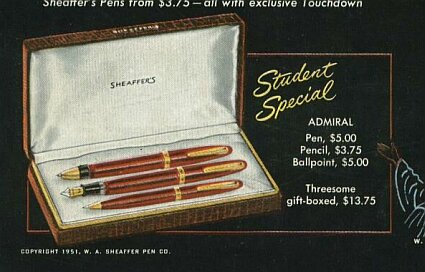
1951 Sheaffer
TM Advertisement Detail Showing The Lower Line Admiral
Model
In my experience, most advertising tends to focus on first line models, with the lower lines getting short shrift, if any mention at all. Sometimes the lesser models are featured as a small part of the advertisement, which at least helps for identifying these models.
Features! Features! Features!
Fountain pens were sold differently in their heyday than they are today. They were writing tools that were commonly used and constantly being modified and improved to give their makers a competitive edge. Every part of the pen had a differentiating feature.
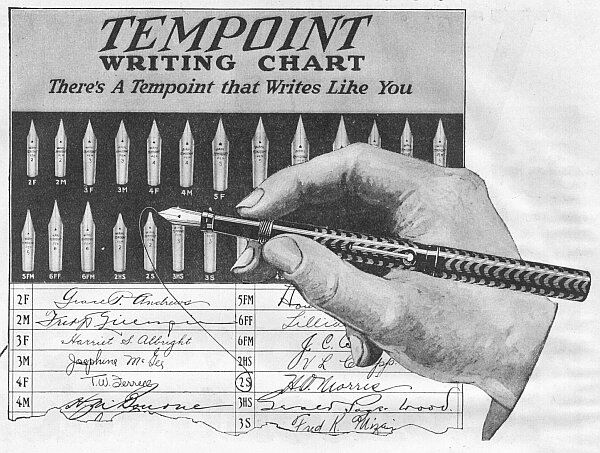
1919 Wahl
Tempoint Advertisement Detail Showing Nib Selection
Options
Nibs: Nibs came in a variety of shapes, sizes and degrees of flexibility. Most manufacturers offered many different styles to meet the needs of their customers. Since the nib is probably the key element in the function of the pen, many advertisements would tout the shape, the smoothness, the stiffness, the selection, and many other angles on the nib to show the products advantages.
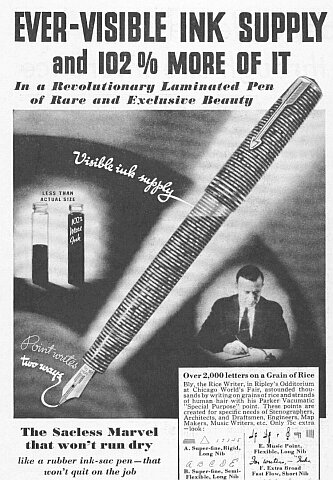
1934 Parker
Vacumatic Advertisement Detail Showing Filler Capacity
Features
Filling Systems: Filling systems became a core feature, starting with Conklin's crescent filler, followed quickly by Sheaffer's lever filler, and spreading out to plungers, vacuum-fillers, twist fillers, and many other types. Sheaffer used detailed cutaway advertising to illustrate the superiority of its Touchdown and Snorkel filling systems.
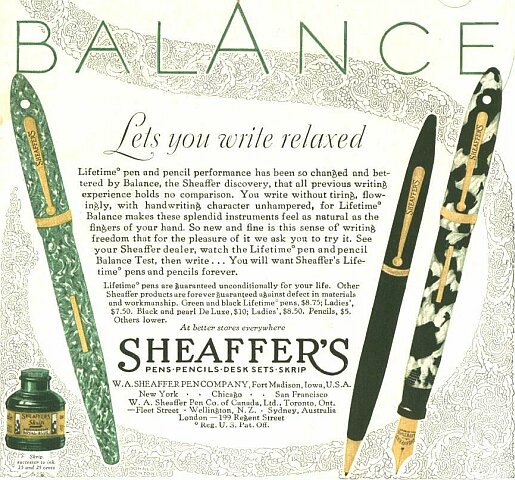
1929 Sheaffer
Balance Advertisement Detail
Design: The shape of the pen became especially important when Sheaffer introduced the Balance pen in 1929. This design so impacted the industry that virtually every pen manufacturer felt the need to streamline their pens to compete.
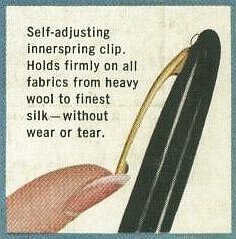
1957 Sheaffer
Snorkel Advertisement Detail Showing Spring Clip
Clips: Clips were tweaked over time from a stamped and bent piece of metal to features such as a roller ball and an internal spring load. Advertisements demonstrated the value of these features.
Where To Find Them
There are many sources for vintage advertisements. The first place to look is that stack of old National Geographics that seems to be in every attic in the country. Sheaffer very often bought the back cover of the magazine in the 1930s through the 1950s, so these are an especially good source for Sheaffer advertisements. Many vintage magazines are sold in thrift and antique shops. A few calls around should help you locate a shop that carries these magazines. Ask especially for the Saturday Evening Post, Time, Life, Fortune, and Look. You'll spend some time flipping through them to find the advertisements and learning where they are typically placed in each magazine. Don't waste time with magazines after 1960 unless you like to hunt for needles in haystacks. Fountain pen advertising tapers off sharply in the 1960s. The best periods are the 1920s through the 1950s. You'll find your best value buying the whole magazine, rather than pre-cut pages.
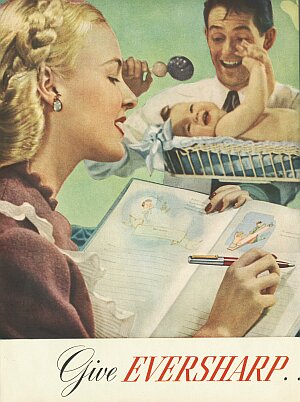
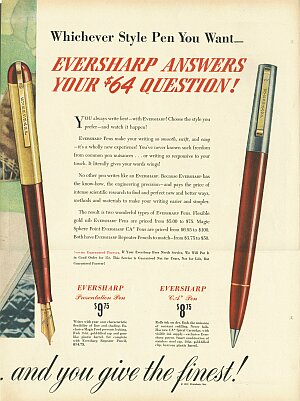
1947 Saturday
Evening Post - Two Page Eversharp Skyline and CA
Ballpoint Spread
There are on-line sources for vintage advertisements, both on auction sites, like eBay and with both fountain pen and antique specialty websites. Learn and be selective, or you'll find yourself paying US $5 to $10 per advertisement, making a large collection of reference material a pricey investment.
Dig around and enjoy the hunt, and you may start to understand what makes history buffs tick!
Follow us on Twitter: PenHero
Add a link to PenHero.com on your blog:
(Copy & paste code)
Please only use the photo provided. Use of other photos requires permission.
The provided link photo will change as we update the site.
Comments on this article may be sent
to the author, Jim Mamoulides
PenHero.com Bibliography